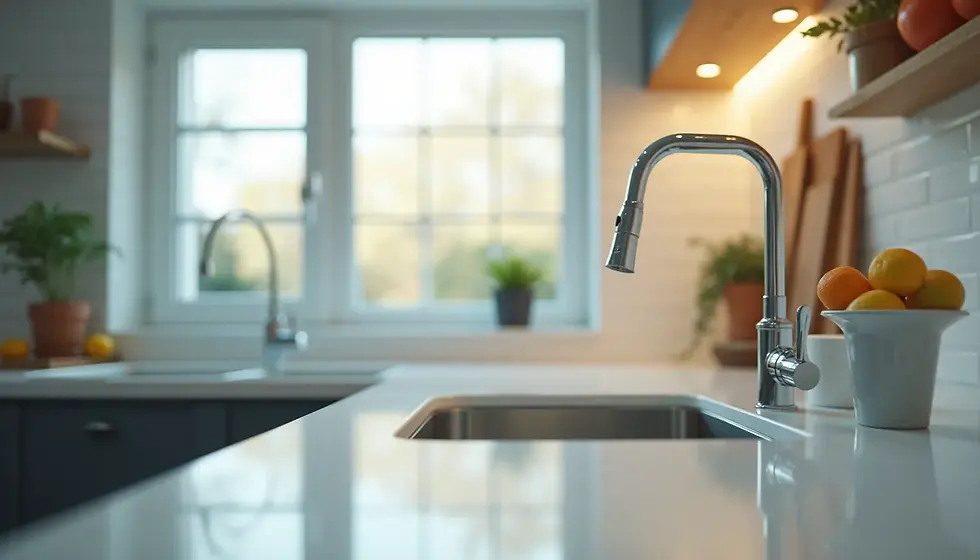10 Proven Ways to Eliminate Small Black Ants from Your Kitchen
- Mei-Lin Arora

- Sep 1
- 4 min read
Updated: Sep 7
Small black ants can quickly become an unwelcome presence in your kitchen. Not only are they annoying, but they also pose a risk to food safety. When these tiny pests invade your space, they can contaminate your food and create an unsanitary environment. Fortunately, there are many effective strategies to eliminate them and keep your kitchen ant-free. In this guide, we will explore ten proven ways to combat small black ants in your kitchen.
Understanding the Ant Problem
Understanding the reasons behind an ant invasion is crucial to finding solutions. Small black ants are attracted to food sources, particularly sugary substances and crumbs. They can easily enter through tiny cracks and gaps; a study found that nearly 90% of ant invasions begin this way. Identifying how they get in will help you implement effective strategies to prevent and eliminate them.
1. Keep Your Kitchen Clean
A clean kitchen is your first line of defense. Regularly wipe down surfaces, sweep and mop the floors, and immediately clean up spills. For example, if you drop a piece of fruit, clean it up right away to prevent attracting ants. Store food in airtight containers, and refrain from leaving pet food out overnight. By minimizing food sources, you make your kitchen less appealing to ants.

2. Seal Entry Points
Ants are small enough to squeeze through tiny openings. Inspect your kitchen and home for cracks or gaps, especially around windows and doors. For instance, a single quarter-sized gap can allow hundreds of ants to enter. Use caulk or weather stripping to seal these entry points. Blocking their access significantly reduces the chances of an invasion.
3. Use Ant Baits
Ant baits are a powerful tool for combating small black ants. These baits contain a slow-acting poison that worker ants carry back to their colony, targeting the queen. Place the baits near their trails; within a few days, you should start to see a decrease in activity. In fact, studies have shown that using bait can reduce ant populations by up to 90% in just a few weeks.
4. Create a Vinegar Solution
Vinegar is an effective natural repellent against ants. Mix equal parts of vinegar and water in a spray bottle and apply it to places where you've noticed ants. The strong smell of vinegar interferes with their scent trails. Additionally, the solution can help remove any pheromone tracks they leave behind. This can confuse and deter ants from using familiar routes into your kitchen.
5. Use Diatomaceous Earth
Diatomaceous earth (DE) is a safe and effective powder made from fossilized algae. It works by damaging ants' exoskeletons, leading to dehydration. Simply sprinkle food-grade diatomaceous earth in areas where you see ants. For best results, reapply every few days or after it's been cleaned. Studies have shown that using DE can reduce ant populations by over 80% within two weeks.
6. Try Boric Acid
Boric acid is another highly effective solution for small black ants. To make a bait, mix boric acid with sugar and water. The sugar attracts the ants, while the boric acid kills them. Set the bait in small containers close to where you've seen ant activity. Use caution, though—boric acid can be harmful to pets and children if ingested, so keep it out of their reach.
7. Utilize Essential Oils
Certain essential oils can repel ants thanks to their strong scents. Oils like peppermint, tea tree, and citrus have proven effective. Mix a few drops of your preferred essential oil with water in a spray bottle, and apply it to affected areas. Ants dislike these scents, which will help keep them from entering your kitchen.
8. Maintain Outdoor Areas
Prevention starts outside your home. Ants often nest outdoors and migrate inside for food. To stop this, keep your yard free from debris and trim back vegetation touching your house. Keep firewood stored away from your home. Regularly check your outdoor areas for nests and take appropriate steps to eliminate them, with a strategy to reduce outdoor nest populations by 50% over a few months.
9. Monitor and Adjust
After applying these strategies, keep an eye on your kitchen for signs of ant activity. Check regularly and be flexible with your methods. If one solution does not yield results, consider combining multiple approaches. Monitoring your efforts will help you identify what works best and make it easier to tackle any invasions early.
10. Seek Professional Help
If you've tried everything without success, it may be time to call a pest control expert. Professionals can provide potent treatments and help identify where the ants are coming from. A comprehensive pest control plan can often eliminate ant problems entirely, and while it may be a bit more expensive, it can save you both time and hassle in the long run.

Final Thoughts
Getting rid of small black ants in your kitchen can be challenging, but it is achievable with the right strategies. Keep your kitchen clean, seal any entry points, and use a mix of natural and chemical solutions to effectively eliminate these pests. Remember to monitor your progress and adjust your methods as needed. If the issue continues, do not hesitate to enlist professional help. With persistence and the proper approach, you can enjoy a kitchen free from ants once again.




Comments